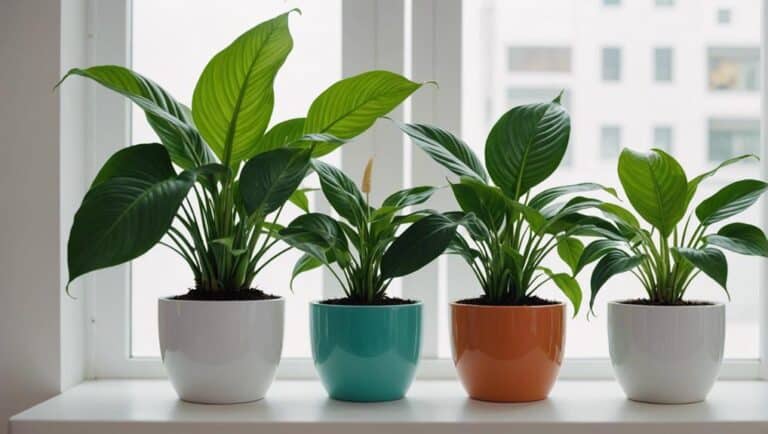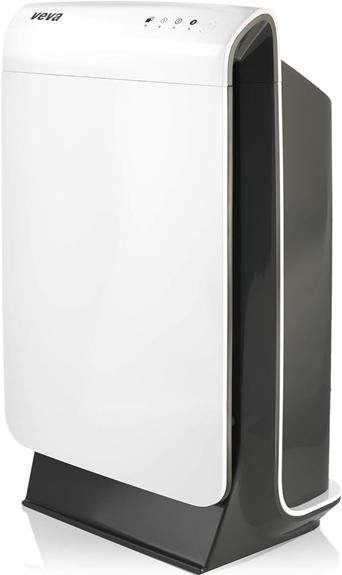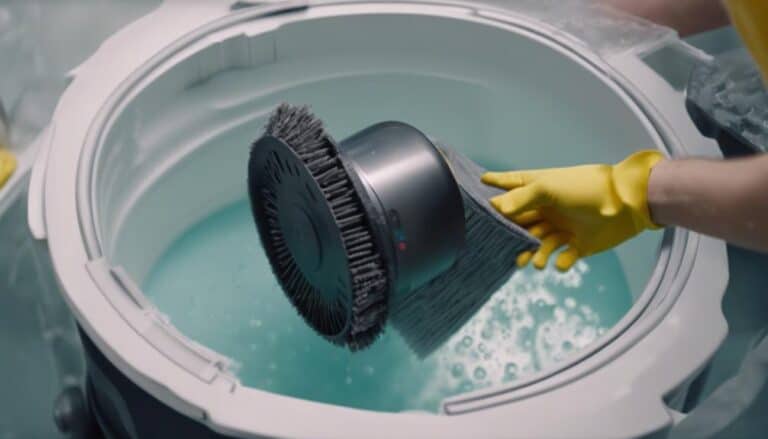Essential Features of an Air Purifier Website
When exploring an air purifier website, we must consider important elements like True HEPA filtration, room size recommendations, cost factors, noise levels, smart features, and more. These features play a pivotal role in determining the effectiveness and suitability of an air purifier for your specific needs.
By understanding the significance of each aspect, users can make informed decisions that positively impact their indoor air quality. Let’s explore how these features come together to create a well-rounded air purifier experience that promotes a healthier living environment.
Importance of True HEPA Filtration
Understanding the importance of True HEPA filtration is essential for anyone looking to enhance their indoor air quality in a major way.
A True HEPA filter is designed to capture 99.97% of particles as small as 0.3 microns, making it highly effective in removing airborne contaminants.
By utilizing an air purifier with True HEPA filtration, you can eliminate common allergens such as dust, pollen, and pet dander, thereby creating a cleaner and healthier environment.
In addition, True HEPA filters play an important role in reducing airborne viruses, including particles associated with COVID-19, providing an added layer of protection for you and your loved ones.
Investing in an air purifier equipped with True HEPA technology ensures thorough and efficient air purification, leading to improved indoor air quality.
For those seeking control over their living spaces and desiring clean, fresh air free from harmful pollutants, opting for a True HEPA filter is a non-negotiable choice.
Room Size and ACH Recommendations
Let’s talk about Room Size Guidelines, ACH Rate Suggestions, and Effective Coverage Areas when choosing an air purifier.
Understanding how your room size impacts the ACH level required for peak air purification is key.
This information will help you select the right air purifier model to effectively clean the air in your space.
Room Size Guidelines
To ensure peak air purification performance in your space, accurately measuring the room size is essential when selecting an appropriate air purifier. Ensuring that the air purifier can efficiently cover the square footage of the room is vital to achieve the desired Air Changes per Hour (ACH) and maintain excellent indoor air quality. Below is a table to guide you in matching your room size with the recommended ACH values:
| Room Size (sq ft) | Recommended ACH |
|---|---|
| Up to 300 | 5 ACH or higher |
| 301-600 | 4 ACH or higher |
| 601-900 | 3 ACH or higher |
| 901-1200 | 2 ACH or higher |
ACH Rate Suggestions
When determining the appropriate ACH rate for your space, it’s essential to calculate the required air changes per hour based on the room size. By measuring the room dimensions, you can determine the necessary ACH rate to enhance indoor air quality effectively.
The CDC recommends a minimum of 5 air changes per hour to reduce virus transmission in enclosed spaces. Opting for higher ACH rates can greatly improve air cleaning efficiency and overall indoor air quality.
Selecting an air purifier that matches your room size ensures that you achieve the desired ACH rate for top performance. It’s important to choose an air purifier capable of providing the required air changes per hour to maintain a healthy indoor environment.
Effective Coverage Areas
To effectively determine the suitable coverage area for an air purifier, consider the room size in square footage alongside the recommended Air Changes per Hour (ACH) for enhanced air cleaning performance. Ensuring that the air purifier matches the room size is vital for achieving the desired ACH, which directly impacts the air quality improvement within the space. Refer to the table below for a quick reference guide on recommended coverage areas based on room size and ACH requirements.
| Room Size (sq ft) | Recommended ACH |
|---|---|
| Up to 300 | 4 ACH |
| 301-700 | 5 ACH |
| 701-1200 | 6 ACH |
Cost and Maintenance Considerations
Taking into account the frequency and cost of filter replacements is vital in evaluating the overall maintenance expenses for an air purifier. Evaluating the maintenance costs, including filter replacements, allows us to make informed decisions about the long-term financial implications of owning an air purifier.
By comparing different models based on their filter replacement needs, we can align our budget with the expected maintenance expenses. It’s important to factor in not only the upfront cost of the air purifier but also the recurring costs associated with filter replacements to have a thorough view of the total cost of ownership.
Additionally, checking product reviews can provide insights into potential issues with stock availability or delays in receiving replacement filters. This proactive approach helps in anticipating and mitigating any maintenance supply challenges that may arise.
Ensuring the availability and pricing of replacement filters beforehand enables us to accurately estimate and plan for ongoing maintenance costs, contributing to a more controlled and manageable ownership experience.
Noise Level Specifications
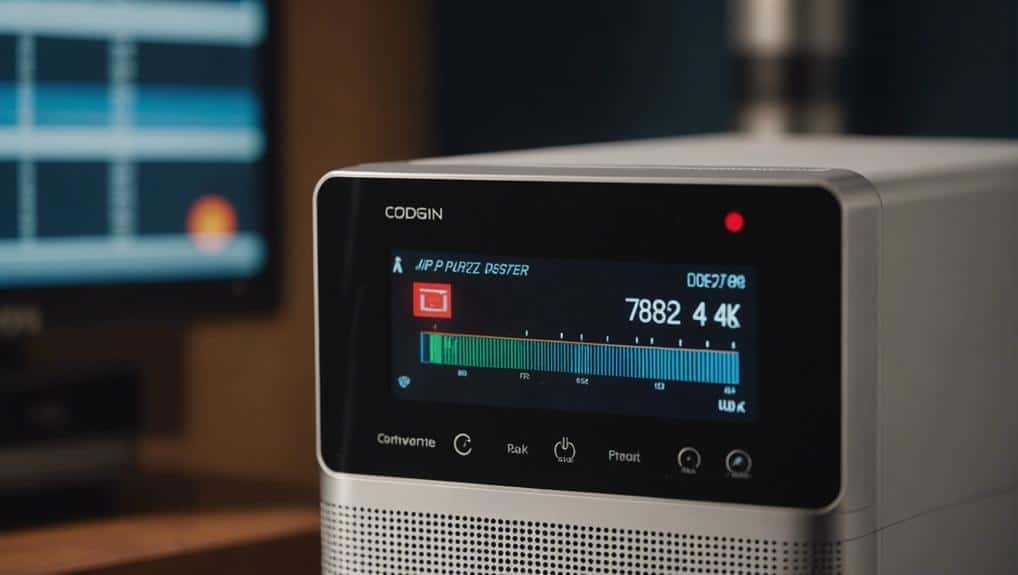
When selecting an air purifier, understanding noise level specifications is essential for creating a comfortable environment.
Comparing decibel levels allows us to choose a unit that aligns with our preferences.
The benefits of quiet operation make it imperative to take into account the noise sensitivity of the room where the air purifier will be used.
Noise Level Importance
How important is the noise level of an air purifier when selecting the right model for your needs?
When considering an air purifier, the noise level plays a vital role in ensuring quiet operation and comfort. Models with lower decibel levels, around 24-30 decibels, are ideal for spaces like bedrooms where silence is valued.
It’s important to take into account the noise sensitivity of users to guarantee a pleasant experience. By checking the product specifications for noise level information, you can find an air purifier that aligns with your desired comfort level.
Selecting a model that operates quietly can enhance your environment, allowing for uninterrupted use without causing disturbances.
Decibel Level Comparison
Considering the importance of noise level in selecting an air purifier, it becomes necessary to examine the decibel level comparisons provided in the specifications.
When evaluating air purifiers, the noise level, typically ranging from 24 to 30 decibels for whisper-quiet models, is vital. To maintain control over the environment, check the precise decibel information to confirm it aligns with your comfort preferences.
As noise sensitivity varies among individuals, choosing an air purifier with an appropriate noise level is essential. Be sure to take into account the decibel rating to ensure the noise level is suitable for the intended location of the air purifier.
Quiet Operation Benefits
Exploring the advantages of quiet operation in air purifiers, we find that whisper-quiet models typically emit noise levels between 24-30 decibels. When considering noise-sensitive areas like bedrooms or offices, guaranteeing minimal disruption is essential.
Checking noise level specifications allows for customization based on room settings and personal comfort preferences. Whisper-quiet air purifiers create a peaceful environment, especially for those with heightened sensitivity to noise.
Smart Capabilities for Informed Decisions
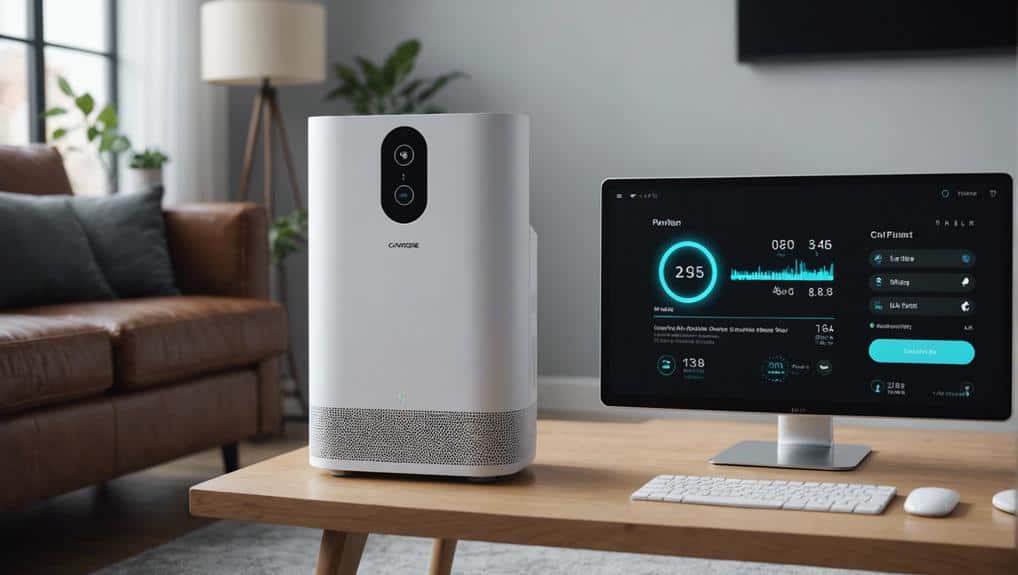
Smart air purifiers equipped with advanced sensors provide users with real-time air quality monitoring for informed decision-making. These smart capabilities offer the convenience of remote control through smartphone apps, allowing users to adjust settings based on the air quality data received.
By integrating with voice assistants like Alexa or Google Assistant, users can effortlessly manage their air purifiers with simple voice commands. Personalized settings can be easily configured to cater to individual preferences and specific air quality needs.
The ability to monitor air quality in real-time empowers users to make informed decisions regarding their indoor environment, ensuring peak air purification at all times. With smart features at their disposal, users have greater control over their air purifiers, enabling them to create a healthier living space tailored to their preferences and requirements.
Avoiding Ozone-Producing Technologies
To safeguard respiratory health, it is essential to steer clear of air purifiers that employ ozone-producing technologies. Ozone generators, electrostatic precipitators, and ionizers are examples of such technologies that can release lung irritant ozone, posing risks to your well-being. These ozone emissions have the potential to worsen conditions like asthma and other respiratory issues, making it important to avoid them when selecting an air purifier.
To help you make informed decisions, here is a quick reference table highlighting ozone-producing technologies to avoid:
| Ozone-Producing Technologies |
|---|
| Ozone Generators |
| Electrostatic Precipitators |
| Ionizers |
When considering an air purifier, make sure it is certified as ozone-free and does not incorporate any of the mentioned technologies. Opt instead for purifiers equipped with HEPA filters and activated carbon filters, which effectively clean the air without the associated risks of ozone exposure. By being mindful of these technologies, you can prioritize your respiratory health and create a safer indoor environment.
Selecting the Right Purifier Size
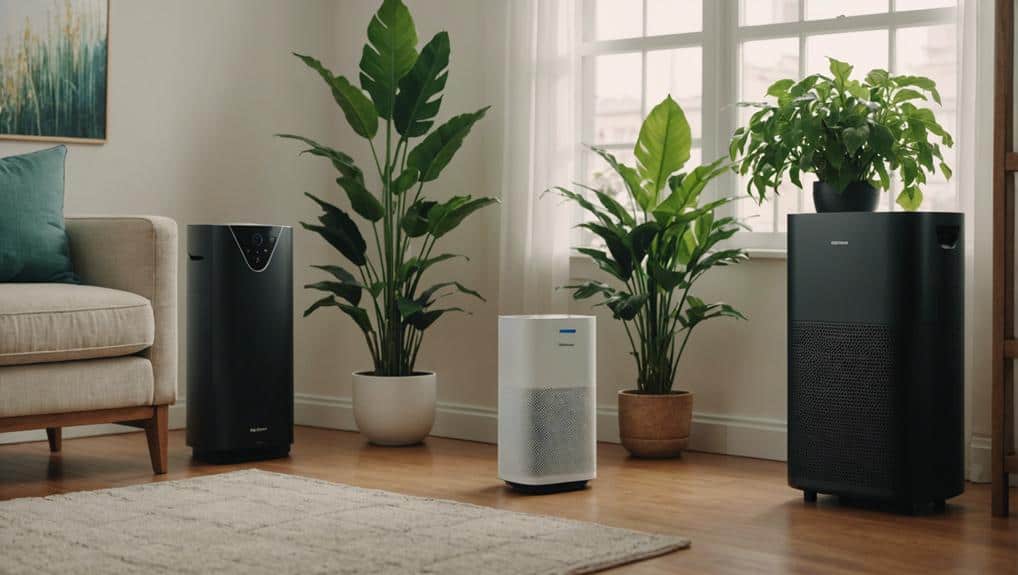
When selecting an air purifier, determining the suitable size based on room dimensions is vital for efficient performance. To guarantee top-notch air purification, measure the length, width, and height of the room to calculate the square footage. Match this figure with the air purifier’s coverage area specifications.
Consider factors like the Air Changes per Hour (ACH) required for the room size and make sure the air purifier’s Clean Air Delivery Rate (CADR) aligns with the room’s dimensions. Selecting the right air purifier size is essential for effective air cleaning.
Additionally, take into consideration the room’s layout and airflow dynamics when choosing the purifier size to maximize efficiency. By carefully evaluating room dimensions and selecting an air purifier with an appropriate coverage area, you can control the quality of air in your space effectively.
Insights Into Extra Features
Considering the functionality of air purifiers, exploring the extra features offered on websites can provide valuable insights for consumers seeking enhanced air purification solutions. Some websites integrate air quality sensors, enabling real-time monitoring to maintain peak indoor air quality levels. Additionally, filter replacement notifications guarantee timely maintenance, enhancing the efficiency of the air purifier.
For those seeking convenience, integration with mobile apps allows users to control the purifier remotely and receive updates on air quality status. Furthermore, features like timers and scheduling options offer users greater control over when and how the air purifier operates.
Conclusion
Overall, when looking for an air purifier, it’s important to prioritize features like:
- True HEPA filtration
- Room size recommendations
- Cost considerations
- Noise levels
- Smart capabilities
- Avoiding ozone-producing technologies
By focusing on these essential aspects, you can make an informed decision to improve your indoor air quality and create a healthier living environment for you and your loved ones.
Choose wisely and breathe easier with the right air purifier for your needs.

